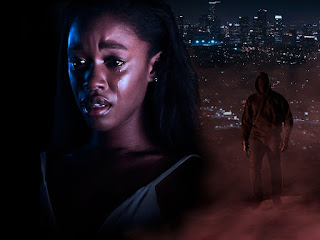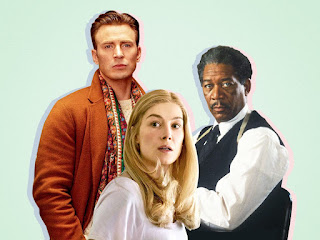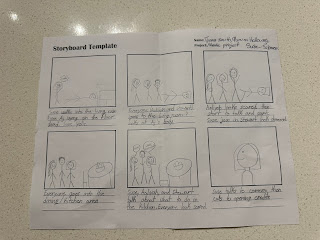Genre research blog
I've seen both high and low camera angles frequently in this genre; nevertheless, high perspectives are more prevalent because they effectively portray shock and terror in thrillers. In thrillers, dutch angles are also commonly used to create a sense of unease or impending doom. Zooms are sometimes employed with eye-level angles to convey tension or emotion; for instance, the angle could be used to depict fear in someone's eyes.
The most common type of camera movement in thrillers I've observed is tracking, which can imply someone is following. Zooms are also utilized since they might appear manufactured or unnatural, which makes them ideal for suspenseful films. Tracking and zooms appear to be more popular, but pans and tilts are also utilized to display scenes and persons.
Establishing shots, broad shots, medium close-ups, long shots, medium shots, close-ups, extreme close-ups, aerial shots, two-shots, and over-the-shoulder shots are among the camera angles I have seen in thriller films. A slow camera angle is used in most scenes to heighten the tension and focus on key parts of the movie.
In thrillers, characters typically dress as appropriate for the situations they find themselves in. For instance, the characters would be dressed casually for school if they were in high school. The thriller's primary antagonist is frequently portrayed as an everyday, gullible individual.
I noticed a prevalent style of lighting while doing research and viewing thrillers for this blog, but I had no idea what it was called. I looked it up and discovered that its name was low-key illumination. Because low-key lighting produces a mysterious, gloomy, and dramatic mood, it is frequently employed in thrillers and other terrifying, suspenseful genres.
In order to create a compelling environment, actors in thrillers typically portray a spectrum of emotions, most commonly fear and uncertainty, through dramatic and frightening performances. The film's success and the characters' acting depend on their capacity to keep the audience guessing and feeling tense in the face of danger.
In order to accurately depict the characters' mental and physical states, which are typically not good, makeup is essential. Characters experiencing stress or psychological pressure can look worried by applying makeup. Additionally, it is employed for special effects, such as when a character is injured, which happens frequently. Additionally, makeup can be used to emphasize a character's psychological journey in a thriller since these films tend to be more psychological than most other terrifying genres. In a thriller movie, makeup visibly heightens the tension and internal struggles of a character.
Props are typically chosen with care to establish or enhance the atmosphere of mystery and danger. Examples of common sightings include weaponry, personal belongings, and symbolic artifacts that serve as plot points. Together, lighting and props provide viewers with mysterious and dark visual sensations that greatly heighten the suspense and tension of thrillers.
In thrillers, one of the primary pillars supporting the unsettling atmosphere is the set. A colorful kid's party room or Disney World wouldn't typically make most individuals feel uncomfortable or exposed. The majority of settings are gloomy and moody. Places that arouse feelings of vulnerability are also frequently found in cramped quarters, remote areas, or expansive, open cityscapes. An atmosphere of dread is also produced by the lighting and set combination.
Jump cuts, cutaways, montages, reverse shots, and cross-cutting of flashbacks and flashforwards are examples of common editing methods. These are mostly employed to reinforce and deepen that feeling.



Comments
Post a Comment